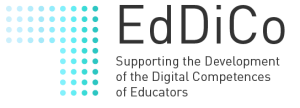Open Learning Analytics Platform (OpenLAP)
The main idea behind the Visualizer is to receive the incoming analyzed data in the OpenLAP-DataSet format and convert it to the format consisting of HTML and JavaScript code which can be visualized on the client side.
“The code consists of two main section, the Visualization Library Script section responsible for including the visualization library scripts on the webpage and the Visualization Generation Script section containing the code to generate the chart. The Visualization Generation Script section is further divided into three sub-sections: the Visualization data sub-section consists of the data to generate the graph. This section should always be generated dynamically based on the input data coming in the input OpenLAPDataSet. The Visualization options sub-section contains the options to define the chart. Which parameters can be customized is explained later in the step by step guide to implement new visualization technique. The Visualization generation section contains the scripts which uses the data and the options to generate the chart. This example is specifically using Google Charts to explain the concept, but any visualization technique can be categorized into these sections and implemented. Before going further into the details, here is a list of terminologies which will be helpful to understand this guide and how they are interacting with each other:
VisualizationFramework: A web visualization library or framework which can be utilized to create interactive visualizations. E.g. D3.js, Google Charts, dygraphs etc.
DataTransformer: A concrete implementation which transforms data received from the client in the form of the OpenLAPDataSet into a data structure understandable by the VisualizationMethod that uses it.
VisualizationMethod: A concrete interactive visualization type. E.g. bar chart, pie chart etc.
To implement a new visualization technique, the developer must extend the abstract class VisualizationCodeGenerator and an interface DataTransformer available in the OpenLAP-Visualizer-Framework project.”

